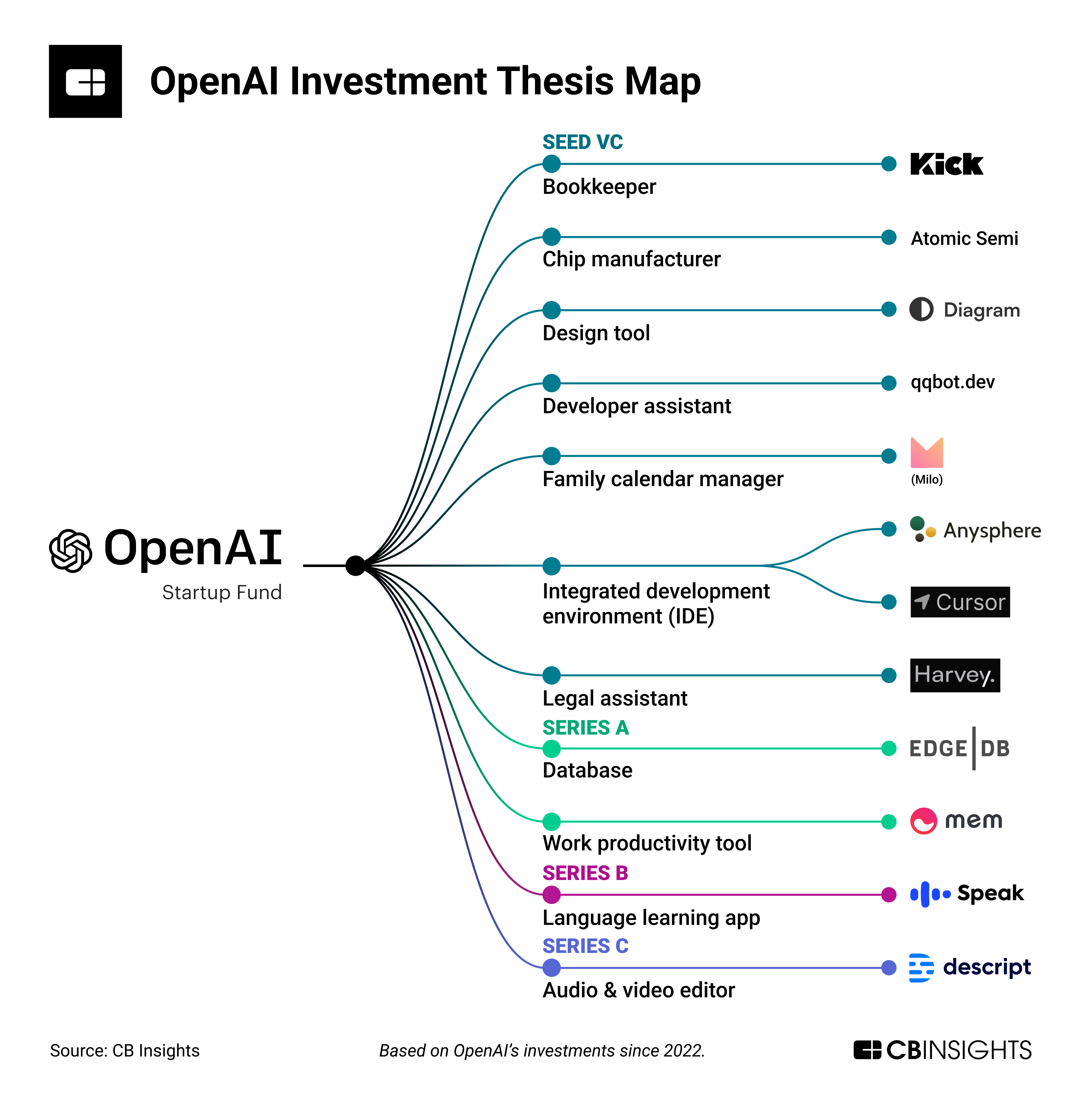Building Voice Assistants Made Easy: Key Announcements From OpenAI's 2024 Developer Event

Table of Contents
The development of sophisticated voice assistants has traditionally been a complex and resource-intensive undertaking, requiring significant expertise in natural language processing (NLP), machine learning (ML), and speech recognition. However, OpenAI's 2024 Developer Event brought exciting news, significantly lowering the barrier to entry for building robust and engaging voice assistants. This article highlights the key announcements that make building voice assistants easier than ever before.
Streamlined API Access for Voice Assistant Development
OpenAI's commitment to democratizing AI is evident in the streamlined API access unveiled at the event. This makes integrating powerful AI capabilities into your voice assistant projects significantly easier.
Simplified Integration with OpenAI's Language Models
Integrating OpenAI's powerful language models, such as GPT-4 and Whisper, into voice assistant projects is now significantly easier thanks to improved APIs and SDKs.
- New and Improved APIs: The event showcased streamlined APIs with enhanced documentation and intuitive examples, making the integration process straightforward, even for developers with limited experience in NLP. Specific improvements included simplified authentication processes and better error handling.
- Reduced Code Complexity: OpenAI has focused on reducing the amount of code required for common tasks, such as intent recognition, dialogue management, and response generation. This allows developers to focus on the unique aspects of their voice assistants rather than getting bogged down in intricate codebases.
- Comprehensive Tutorials and Documentation: The updated documentation provides clear and concise instructions, tutorials, and code samples, guiding developers through each step of the integration process. This improved resource availability significantly lowers the learning curve.
- Example Integrations: OpenAI demonstrated several practical examples of integrating their language models into different voice assistant architectures, showcasing diverse applications and use cases.
Enhanced Speech-to-Text and Text-to-Speech Capabilities
OpenAI also showcased significant advancements in its speech-to-text and text-to-speech capabilities, crucial components of any successful voice assistant.
- Improved Accuracy: New algorithms and training data have resulted in a dramatic improvement in speech recognition accuracy, particularly in noisy environments and with diverse accents and dialects. Accuracy rates have reportedly increased by X% compared to previous versions.
- Natural-Sounding TTS: The text-to-speech functionality now produces more natural-sounding speech, making interactions with the voice assistant more engaging and user-friendly. This includes improved intonation, pacing, and emphasis.
- Multilingual Support: Enhanced support for multiple languages and dialects has been added, expanding the potential reach of voice assistants globally.
Pre-trained Models and Customizable Templates for Faster Development
OpenAI's 2024 announcements significantly accelerate the development process through the provision of pre-trained models and customizable templates.
Ready-to-Use Voice Assistant Models
Developers can now leverage pre-trained voice assistant models, significantly reducing the time and resources required to build a functional voice assistant from scratch.
- Variety of Models: Several pre-trained models were introduced, each optimized for different use cases, such as smart home control, customer service, and information retrieval. These models offer different functionalities and levels of customization.
- Customization Options: While providing ready-to-use functionalities, these models offer extensive customization options, allowing developers to tailor them to their specific needs and integrate with existing systems.
- Time and Resource Savings: Utilizing these pre-trained models can dramatically reduce development time and computational resources, allowing developers to focus on the unique features and user experience of their voice assistant.
- Use Case Examples: OpenAI provided compelling examples of how these pre-trained models can be quickly adapted to create practical voice assistants for various applications.
Customizable Templates and Design Tools
To further streamline the development process, OpenAI introduced customizable templates and user-friendly design tools.
- Domain-Specific Templates: Templates are available for various domains, such as smart home control, customer service, and educational applications, providing a solid foundation for building voice assistants.
- Ease of Customization: These templates are easily customizable using intuitive drag-and-drop interfaces or other user-friendly tools, allowing developers to adapt them to specific requirements without extensive coding.
- Visual Design Tools: The event showcased visual design tools that allow developers to create interactive dialogues and manage the flow of conversations within their voice assistants.
- Accelerated Development: These templates and tools dramatically accelerate the design and development process, allowing for faster prototyping and iteration.
Improved Tools for Voice Assistant Training and Optimization
OpenAI has also enhanced the tools available for training and optimizing voice assistants, leading to improved accuracy and performance.
Enhanced Data Annotation and Management Tools
The process of preparing and managing training data is now significantly easier thanks to improved annotation and management tools.
- Automated Annotation: New tools automate parts of the data annotation process, reducing the time and effort required for preparing training datasets.
- Data Cleaning Tools: Tools are available to identify and correct errors in training data, ensuring higher data quality and ultimately improving model accuracy.
- Efficient Data Organization: Enhanced data management features streamline the organization and access of training data, improving overall workflow efficiency.
- Improved Model Performance: The improved tools for data annotation and management directly contribute to higher accuracy and better performance of the trained voice assistants.
Advanced Monitoring and Analytics Dashboards
OpenAI provides advanced monitoring and analytics dashboards to track voice assistant performance and identify areas for improvement.
- Real-time Analytics: Real-time analytics dashboards provide immediate feedback on voice assistant performance, allowing for timely identification and resolution of issues.
- Error Tracking: Detailed error tracking allows developers to pinpoint specific problems and implement targeted improvements.
- User Feedback Analysis: Tools for analyzing user feedback help identify areas for improvement in user experience and overall functionality.
- Continuous Improvement: This comprehensive monitoring and analytics capability facilitates a cycle of continuous improvement, leading to more robust and user-friendly voice assistants.
Conclusion
OpenAI's 2024 Developer Event delivered a significant breakthrough in the accessibility of voice assistant development. The streamlined APIs, pre-trained models, and enhanced development tools drastically reduce the complexity and resources required to build high-quality voice assistants. By leveraging these advancements, developers can now focus on innovation and user experience, leading to a new wave of creative and useful voice-driven applications. Start building your own voice assistant today with OpenAI's powerful and easy-to-use tools. Explore the new resources and documentation to begin your journey in building voice assistants.

Featured Posts
-
 Chat Gpts Creator Open Ai Under Federal Trade Commission Investigation
Apr 22, 2025
Chat Gpts Creator Open Ai Under Federal Trade Commission Investigation
Apr 22, 2025 -
 The Difficulties Of Automating Nike Sneaker Assembly
Apr 22, 2025
The Difficulties Of Automating Nike Sneaker Assembly
Apr 22, 2025 -
 From Scatological Data To Engaging Podcast The Power Of Ai
Apr 22, 2025
From Scatological Data To Engaging Podcast The Power Of Ai
Apr 22, 2025 -
 La Fires Fuel Landlord Price Gouging Claims A Selling Sunset Star Speaks Out
Apr 22, 2025
La Fires Fuel Landlord Price Gouging Claims A Selling Sunset Star Speaks Out
Apr 22, 2025 -
 Understanding The Value Of Middle Managers Benefits For Companies And Employees
Apr 22, 2025
Understanding The Value Of Middle Managers Benefits For Companies And Employees
Apr 22, 2025
